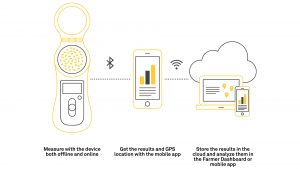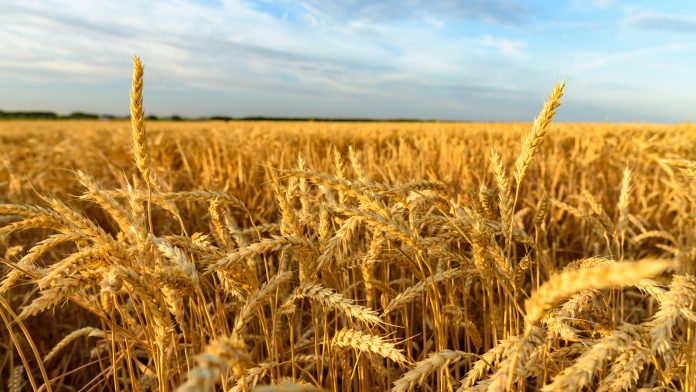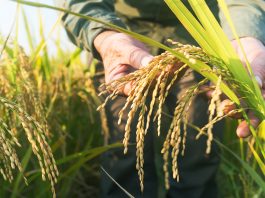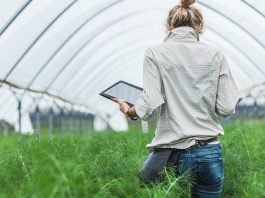GrainSense, the first hand-held device for measuring grain quality on the spot, is an example of the new technologies that are needed to tackle modern agriculture challenges.
Grain is currently the number one protein source for feed within the EU. This is not expected to change in the midterm future and as a result, farmers and other players inside the grain food chain need to ensure that protein is being utilised as efficiently as possible. This place a high amount of pressure on segregation at the farm level, first pick-up level, and on the end storage, processing, and consumption levels. Producing more with less, while preserving food quality and the environment, is one of the main challenges of the 21st century.
With most of the world’s suitable farmland already in use, farmers need new ways to produce more food on each acre of land, as well as new ways to optimise the allocation of the produced crops once they have been harvested. To overcome these challenges in a sustainable way, improving farms’ efficiency as much as improving farms’ profitability is key. Indeed, for farming businesses to succeed and remain profitable, they must be able to progress with the times. This means embracing new machinery and tools and adapting new working habits.
However, the change needs to happen in the field but more importantly from the field to the fork. Innovation is more important in modern agriculture than ever before. GrainSense, the first truly hand-held device for measuring grain quality on the spot, is a great example of the new technologies that are needed in order to take on these challenges.
Making new technologies available to farmers
In the last decade, the fast development of new technologies in agriculture has allowed expensive technology that was only previously available to bigger players, to now be accessible to farmers. In this respect, after many years of development, GrainSense, a Finnish-based company, was able to develop the first truly hand-held device for grain quality measurement in the field.
The GrainSense device measures the key parameters of crop quality (protein, moisture, oil and carbohydrates) on the spot in a few seconds. These parameters of cereals and other crops can be measured by anyone and at any time once the kernels have ripened. Farmers have always been paid according to the quantity produced, though in the last couple of decades many European countries also pay premiums based on quality, (such as the protein and moisture content).

Near-infrared spectroscopy, one technology used to analyse the quality of the crops delivered by farmers, has been used for more than 30 years in the grain industry. The GrainSense device also uses near-Infrared Spectroscopy but harnesses the light in a more efficient way. Moreover, the analysis is sent from the GrainSense device to the GrainSense app with GPS coordinates via a Bluetooth connection, allowing data analysis through the GrainSense cloud-services. Such a device is now accessible to farmers, as it is both easy to use and affordable. It is also providing results instantly to the farmers. Indeed, new technology of the sort rebalances the food chain and makes it more transparent as the same knowledge is brought to all players.
Using data to make farms more profitable
In the field, all spikes of cereal crops usually look the same on the same plant or even from plant to plant, but quality with special regards to the protein content fluctuates. GrainSense allows growers to already know the protein and moisture content of their crops to better organise harvest planning and segregation directly at the farm level. It also provides farmers more negotiating power when selling their productions. Harvests are becoming increasingly difficult (and unstable to predict) due to environmental factors. Therefore, providing quality data empowers farmers to market their crops on their own, as opposed to traditional selling methods (i.e. grain market platforms).
An 1% increase in the protein levels of grain can affect the price by €20+ per ton. Livestock farmers can also use such a device as GrainSense to analyse feed all year long and enhance protein intake while optimising farm output use. As protein supplements to livestock feeds can often be costly, it is important when mixing feed to know the exact parameters to every component added. Farmers buying feed-wheat often pay and buy based on tonnage. If the protein levels of these secondary components were known, farms could then adjust the amounts of protein-rich crops, such as soybean meal. Now, tools like GrainSense can provide the quality parameters for these components of the feed to minimise feeding costs and maximise efficiency.
Indeed, running a profitable farm is complex. Alongside various other reasons, running a farm is difficult due to variables that are constantly changing. Soil moisture levels, nutrient and fertiliser needs, weather patterns, and the threat of pests are among a few of the variables that often fluctuate. Therefore, farming is really a ‘numbers game’. A successful farm collects large amounts of data, determines which data is relevant, and then turns this data into information and decisions. The huge diversity of farmers makes it difficult to pinpoint specific success factors to improve farm profitability. However, implementing new technologies such as sensors at the field level allows the collection of new data that can then be used for benchmarking and making decisions based on this data in order to improve profits on a short term and a long-term basis. Benchmarking is not about determining who is better, but where and how a farmer can improve.
Farmers have always used their own knowledge of their fields, along with additional available information, to make decisions. Today, both agricultural production and farmers are exposed to different risks. Weather, market and financial conditions cannot be easily predicted from year to year. Nevertheless, farmers have the possibility to use affordable tools like GrainSense to collect the data in a more systematic and less subjective way and turn it into valuable information for better decision making, and therefore protect themselves from uncertainty.
Using field data on a higher level
Data collected on the field and farm levels can also improve collectors’ and buyers’ working operations and business efficiency and therefore also the entire food chain efficiency and sustainability. Indeed, quality measurements realised too late can significantly impact farmers’ incomes, but also have consequences for the entire food value chain – grains of different qualities can be harvested, and mixed, and the overall quality of the lots can be affected. Grain analysis needs to already be done in the field and prior to harvest.
Data-driven farming produces enormous amounts of data; thus, data analytics is the key to profitability in all sectors for all kinds of businesses. Such data can be used to better understand at a higher level where and what improvements can be implemented. It also helps to understand how grain quality fluctuates year to year and market to market. Indeed, while GrainSense sales began in Spring 2018, GrainSense users have been collecting more than 50,000 data points during harvest 2018 and 2019. Each point corresponds to a grain quality measurement with GPS coordinates. Developing field and farm sensors, taking GrainSense as an example, will enable farm business to become more and more profitable. Data-driven farming can help to understand what really happens in the field, a key to the success of European and global farming.
For a long time, a ‘gut feeling’ has been the best tool that every farmer could have in order to manage their farm. Nowadays, the world is so hectic, and everything happens so fast that for a farm business to be profitable, instant and reliable data is essential. Thanks to new tools and technologies, farming processes will become increasingly data-driven and data-enabled. Indeed, the European market must adapt to new technologies and methods to strengthen their competitiveness on a global scale. There is probably no other field like agriculture, where AI and all other digital technologies will have the most uses. Farm businesses that do not keep up to date with current and future trends will not survive and their goals will not be achieved. Revolutionising farming is essential to farm output and keeping European farmers afloat.
Julia Auzeral
Business Developer
GrainSense
+358 50 322 9392
sales@grainsense.com
www.linkedin.com/company/grainsense/
www.grainsense.com/
Please note, this article will also appear in the first edition of our brand new quarterly publication. Subscribe here for all the exciting news updates.





